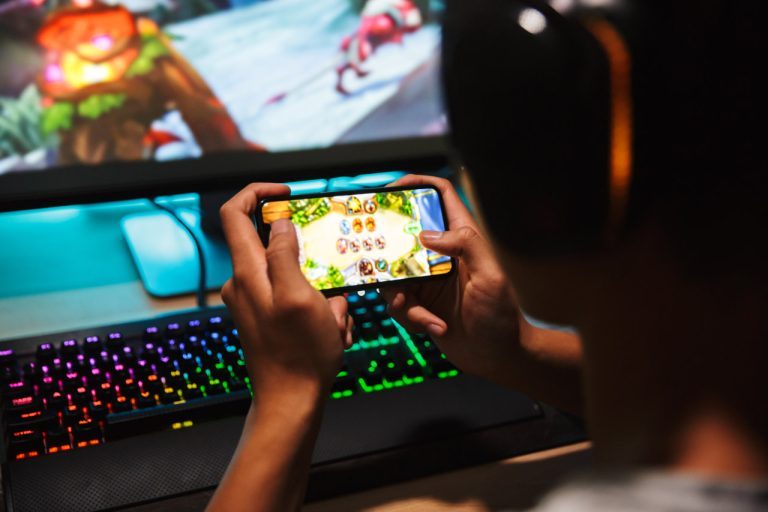
In the universe of games, two types stand out: cooperative and competitive games. Both have distinct characteristics, advantages and disadvantages that can influence the experience of those who play. In this article, we explain what each one of them is, their advantages and disadvantages.
What are cooperative games?
Cooperative games are games in which participants work together to achieve a common goal, rather than competing against each other. In this type of game, the emphasis is on collaboration, communication, and teamwork rather than individual victory.
In addition, in cooperative games, unlike competitive games, players must share information, plan strategies and make decisions together to overcome the challenges presented by the game. They may need to solve puzzles, face game-controlled opponents, or overcome obstacles to reach the final goal.
One of the important characteristics of cooperative games is the idea of “win or lose together”. This means that all players are seen as part of a team, and success or failure is shared by all. Therefore, if the team fails to reach the goal, everyone loses together. This approach encourages communication, mutual support, and teamwork.
Advantages of cooperative games:
Cooperative games offer several advantages, both in terms of personal development and social interaction. Here are some of the main advantages of cooperative games over competitive games:
Promotion of teamwork:
Cooperative games encourage players to work together towards a common goal. Therefore, this promotes collaboration, communication and sharing of ideas, skills and resources.
Development of social skills:
By playing cooperatively, players learn to listen to others, express their own ideas, respect differing opinions, and resolve conflicts constructively. In this way, it strengthens communication skills and the ability to work in a group.
Building relationships:
Playing cooperatively creates a sense of togetherness and camaraderie among players. They need to trust each other, support each other, and develop a sense of trust and respect. This can strengthen personal relationships and build stronger bonds.
Development of cognitive skills:
Cooperative games often require strategic thinking, problem solving, and group decision making. Players are challenged to think critically, plan actions and anticipate the consequences of their choices, which can promote the development of cognitive skills.
Inclusion and equality:
Cooperative games offer an inclusive approach where all players are valued and have the opportunity to contribute to the success of the group. This promotes an environment of equality, where individual skills are valued and everyone has a chance to actively participate, regardless of their previous skills or experience.
Stress reduction and shared fun:
Playing cooperatively can be a fun and relaxing form of entertainment. Players can enjoy the experience more lightly, as they are not competing against each other, but collaborating and tackling challenges together. This can help reduce stress and increase shared fun.
These are some of the advantages of cooperative games, which make them a great option to promote personal development, positive social interaction and group fun.
Disadvantages of cooperative games:
While cooperative games have many advantages, there are also some disadvantages to consider. Here are some of the possible disadvantages of cooperative games compared to competitive games:
Possibility of contribution imbalance:
In some cooperative games, there may be a discrepancy in player contributions. Some may end up taking on most of the work or making all the decisions, while others become more passive. This can lead to frustration and a sense of inequality among players.
Lack of competition:
For some people, healthy competition can be a source of motivation and fun. In cooperative games, the emphasis is on collaboration, and direct competition between players is minimized or absent. This might not be as appealing to those who prefer a competitive dynamic.
Possibility of dominant players:
In certain situations, more assertive or dominant players can end up making all the decisions and dictating the course of the game. This can diminish the participation and voice of other players, resulting in a less immersive and inclusive experience.
Less emphasis on individual development:
While cooperative games promote teamwork and social skill development, they may offer less emphasis on individual growth compared to competitive games. Co-op games generally don't highlight individual achievement and personal growth as a central focus.
Coordination challenges:
Collaboration and communication are key in cooperative games, but coordination challenges can arise. Coordinating the actions of multiple players can be tricky, especially if there's a lack of effective communication or differing perspectives on the best approach. This can lead to gameplay conflicts or inefficiencies.
Lower sense of personal competence:
For some players, the feeling of achieving individual victory can provide a sense of personal competence and achievement. In cooperative games, the focus is on group victory, which can result in less personal satisfaction for those seeking individual recognition.
It is important to remember that the disadvantages may vary depending on the specific game and individual player preferences. However, it is possible to minimize some of these disadvantages with good communication, equitable distribution of responsibilities, and an inclusive and respectful environment during the game.
What are competitive games?
Competitive games are games in which participants compete against each other to achieve victory. In this type of game, the main objective is to overcome other players, usually accumulating more points, reaching a destination first or directly defeating opponents.
In addition, in competitive games, unlike competitive games, players are in a direct dispute, seeking to demonstrate their individual skills, strategies and ability to overcome opponents. In addition, they can use aggressive tactics, try to block other players' progress, or adopt defensive strategies to protect their own interests.
Competition is a central element in competitive games, where the main objective is to win, often to the detriment of other players. Victory is usually rewarded with recognition, status and, in some cases, prizes.
Advantages of competitive games:
Competitive games offer several advantages, both in terms of personal development and social interaction. So, here are some of the main advantages of competitive gaming:
Stimulating personal growth:
Competitive games challenge players to improve their individual skills and strategies to overcome opponents. This promotes the development of cognitive skills such as strategic thinking, quick decision making and problem solving under pressure.
Focus on personal achievement:
Competing in competitive games can provide a sense of personal achievement when you achieve victory or achieve specific goals. This can increase self-confidence, a sense of competence and motivation to take on new challenges.
Development of social skills:
Competitive games provide opportunities to hone soft skills such as communication, negotiation, teamwork and fair play. Players learn to deal with wins and losses, respect the rules and interact with other players in a competitive environment.
Sense of fun and entertainment:
Healthy competition can make games more exciting and fun. Friendly rivalry between players can increase excitement and tension, providing a more stimulating and immersive gaming experience.
Development of resilience skills:
In competitive games, players face defeats and obstacles along the way. It challenges them to build resilience, learn from mistakes, and persist in pursuit of victory. The ability to deal with defeat and bounce back is a valuable skill that can transfer to other aspects of life.
Promotion of healthy competition:
Competitive games provide a controlled platform for competition, where you can learn to handle winning and losing fairly and respectfully. This helps to develop a fair play mentality, respect for other players and sports ethics.
Importantly, healthy competition is one in which players value fun, personal growth, and good sportsmanship above all else. When competitive games are played with respect and balance, they can provide a number of benefits for players.
Disadvantages of competitive games:
Just as competitive gaming has its advantages, there are also some disadvantages to consider. Here are some potential disadvantages of competitive gaming:
Stress and excessive pressure:
Competing in competitive games can create an environment of intense stress and pressure. Furthermore, the pursuit of victory can lead to high levels of anxiety, frustration, and even hostility among players. This can negatively affect participants' emotional well-being.
Exclusive focus on victory:
In competitive games, the main objective is to win, and this can lead to an overly victory-oriented mindset. Therefore, excessive focus on the end result can diminish the importance of the process, fun and learning throughout the game.
Rivalry and Conflict:
Intense competition in competitive games can lead to rivalry and conflicts between players. Therefore, this can result in heated disputes, unethical behavior, cheating, or even damaging personal relationships outside of the game.
Exclusion feelings:
Not all players are equally skilled or experienced, which can result in a competitive imbalance. In this way, less skilled players can feel excluded or discouraged by the constant defeat, which can lead to a reduction in pleasure and participation in the game.
Emphasis on the comparison:
Competition in competitive games can lead players to constantly compare themselves to each other. This can lead to feelings of inadequacy, low self-esteem and a lack of confidence. Additionally, over-comparison can diminish appreciation for each player's individual skills and personal journey.
Loss of focus on the playful aspect:
The competitive spirit can sometimes overshadow the playful aspect of games. Excessive focus on winning can reduce the enjoyment and fun shared between players, resulting in a less satisfying experience.
It is important to note that disadvantages can vary depending on the specific game, the context in which players play and how they approach competition. Additionally, establishing a healthy gaming environment, promoting fair play, and prioritizing participants' emotional well-being can help minimize these disadvantages.
On the other hand, cooperative and competitive games have their own advantages and disadvantages. It is important to consider these aspects when choosing the type of game that best suits your style and goals as a player.
See too:
















